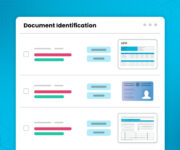Many have encountered a frustrating situation where they could not make a UPI payment due to poor internet connectivity. It is the sole reason that leads to the disruption of digital financial services, resulting in issues like failed transactions, UPI apps stuck at the loading screen and waiting endlessly for the merchant details to show up.
Therefore, usage of UPI and fintech payment solutions significantly depend on dependable internet connectivity. However, a study revealed two out of three Indians face issues when making digital payments due to poor network connectivity, and 9 of 10 users have reported network connectivity issues; despite over 98% of India having 4G coverage.
As a remedial measure, the Reserve Bank of India (RBI) has devised a framework to solve this pesky problem: a framework allowing offline payments.
In this blog, we will discuss how it can make transactions more seamless and influence fintech growth in India.
Boosting Fintech: An Overview Of The Offline Payments Framework
An offline digital payment is a transaction that does not need internet connectivity. Despite sounding absurd, the RBI’s recent framework for enabling small-value offline digital payments has made it possible.
The new framework allows offline payments made face-to-face, up to Rs 200 per transaction, with an overall limit of Rs 2000.
RBI has designed the new framework based on the feedback from pilot runs carried out nationwide from September 2020 to June 2021 to develop a solution for internet-dependent payments.
9 Notable Features of RBI’s Offline Payments Framework
Here are some key features in the framework listed below:
-
Special wallet
The user loads money in a special wallet, subject to a limit of Rs 2000 per instrument, and they can use the app offline to make payments.
-
No Need for AFA
Though user consent is required, these offline transactions do not require an additional factor of authentication (AFA) like a pin or one-time password.
-
Payment instrument enablers
Authorised Payment System Operators and Participants (Banks and Non-banks) will enable payment instruments for offline transactions based on the customer’s explicit consent.
-
QR Code Generation
The user scans a QR code, after which the amount gets debited from the wallet even if the merchant has no network. A QR code gets generated after the payment, which acts as proof of payment. Once either the merchant or the customer goes online, the transaction gets settled.
-
SMS/Email alerts
As the transactions are offline, alerts through an SMS or an e-mail are received after a time lag or when the internet connection is back. These alerts may not be available for each transaction.
-
Reloading the balance
The Rs 2000 limit is applicable until the customer replenishes the balance. The user can reload the balance only through the online mode.
-
Multiple channels
The framework enables small-value offline digital payments using any instrument or channel, like cards, wallets and mobile devices.
-
Consistent protection
Users have similar protection against customer liability if there are any fraudulent or unauthorised transactions and grievance redressal, as in the case of regular electronic banking transactions.
-
Liabilities
The acquirer must absorb liabilities arising from any security or technical issues at the merchant’s end.
Impact Of Offline Payments Framework On Fintech
As innovations occur across the fintech sector, they have a trickle-down effect on the entire economy. Mobile banking, in recent times, has been one such innovation. Here’s how the RBI framework can impact the fintech sector:
1. Promote Financial Inclusion
The adoption of digital payments has been low in rural and lower-tier cities due to connectivity issues. Digital payments can wean buyers and sellers off cash transactions and steer them towards formal banking channels. This eventually paves the way for adopting other fintech services like savings, investments, loans and more.
2. Introduce New Users To Fintech
The offline option encourages first-time users to make digital payments using mobile devices, cards, or wallets. Popular technologies like Bluetooth, sound waves, NFC, or IVRS will be instrumental in developing innovative solutions for such payments.
3. Facilitates Last Mile Penetration
This payments framework incentivises last-mile penetration of digital payments and ensures the benefits of fintech innovations reach remote corners of the country.
4. Mix Of Safety And Convenience
The framework strikes a balance between safety and convenience. The transaction cap of Rs. 200 and a total cap of Rs. 2,000 (per instrument) are in place to ensure user security. Non-requirement of the additional factor of authentication adds to user convenience.
5. Help Small Businesses Expand Their Base
Transactions habitually settled in cash, especially in small businesses, will now be settled offline using the customer’s UPI-enabled app., card, e-wallet or mobile device. This increase in person-to-merchant (P2M) and peer-to-peer (P2P) transactions via payment apps will give rise to a new wider segment for businesses.
4 Vital Fintech Challenges To Offline Payment Adoption
Though offline payment comes with many advantages, it does pose some challenges. Such as:
-
Top-up requires an internet connection
The user can top-up the wallet only when they are online with an AFA code; if one is going to be in a low connectivity region for a prolonged period, then they would not be able to replenish funds if they run out of money in their wallet.
-
Future of Existing Debit Cards
Another challenge is the usability of existing debit cards for offline payments; can these cards be used, or do new cards have to be issued?
-
Mobile Devices as a Solution
Mobile devices could emerge as one of the possible solutions. Banks and payment services can come together to devise a solution for processing payments through point-of-sale (PoS) terminals, mobile devices etc., either with or in the absence of a network and communicating transaction alerts to the user upon the user receiving connectivity.
-
Slow Adoption
Implementation of the framework is left to the banks’ and payment system operators’ desire and is not a mandatory obligation placed on them. Banks have been slow in adopting and deploying technology solutions and infrastructure and may not be incentivised to implement offline payments for their users.
Key Takeaways
The Reserve Bank of India’s framework enabling offline payments will have benefits across a large spectrum. Users in remote parts are not left behind and can benefit from the fintech revolution. Small businesses and banks also stand to gain with an expanded user base.
Finezza offers a range of services for integrating payment options with different frameworks. Additionally, Finezza is software and platform agnostic and offers secure APIs and data pipelines to make integration easy. We emphasise your dynamic security needs as well.
Schedule a demo today!




Leave a Reply